175 Years in Australia (2006)
As the Francis French family and John Badcock came ashore at Hobart Town, Van Diemen’s Land on the 23 August 1831, they probably felt their former home at Pelynt, Cornwall was a world away, for life at the settlement was very different. Fluttering from the masts of the whaling boats at anchor, were the flags of a number of nations that had made Hobart Town the base for their lucrative whaling operations while towering over the fledgling settlement was the 4,166 feet snow-covered monolith of Mt. Wellington.
The reality that they had reached the penal colony of Van Diemen’s Land would have soon confronted them as they encountered gangs of men, dressed in their yellow or grey garb stencilled with the distinctive broad arrow insignia, working at building roads or erecting buildings, or at the treadmills grinding wheat into flour. Other convicts may have been seen still held in the stocks recovering, their bare backs raw and bleeding from their allocated lashes for some misdemeanour. While centrally situated was the prison with its gallows standing prominently on its high walls. This dreaded contraption was in constant use, and if not holding the dangling body of a recent execution, stood waiting for its next condemned felon. At the time hangings were much-publicized public events.
Van Diemen’s Land, now known as Tasmania, had been established as a penal colony in 1803, and was to receive over 67,000 convicts between then and when transportation ceased in 1853.
Amongst these convicts was Edward French, an older brother of Francis, who had been transported from Cornwall in 1813 for sheep stealing. After three years in Sydney he had been moved to Port Dalrymple at the head of the Tamar River in the north of Van Diemen’s Land, and by 1817 had reached Launceston where he would remain for the rest of his life.
After having spent 133 days cramped aboard the 290-ton barque “Mary Ann”, the 37 passengers would have been eager to get ashore and regain their land legs, enjoy a long-awaited bath and a meal of fresh food. The proper laundering of their clothes would have been another priority.
Francis and Mary French, seven of their children, and a niece and nephew, Grace and Richard French together with John Badcock were emigrating from Pelynt, Cornwall. John Badcock had been born there in 1807, the third child of a family of five children born to John and Elizabeth (nee Mitchell) Badcock. Francis and Mary (nee Oliver) French had arrived at Pelynt in 1810 immediately after their marriage. Both Francis and John had been involved in agriculture.
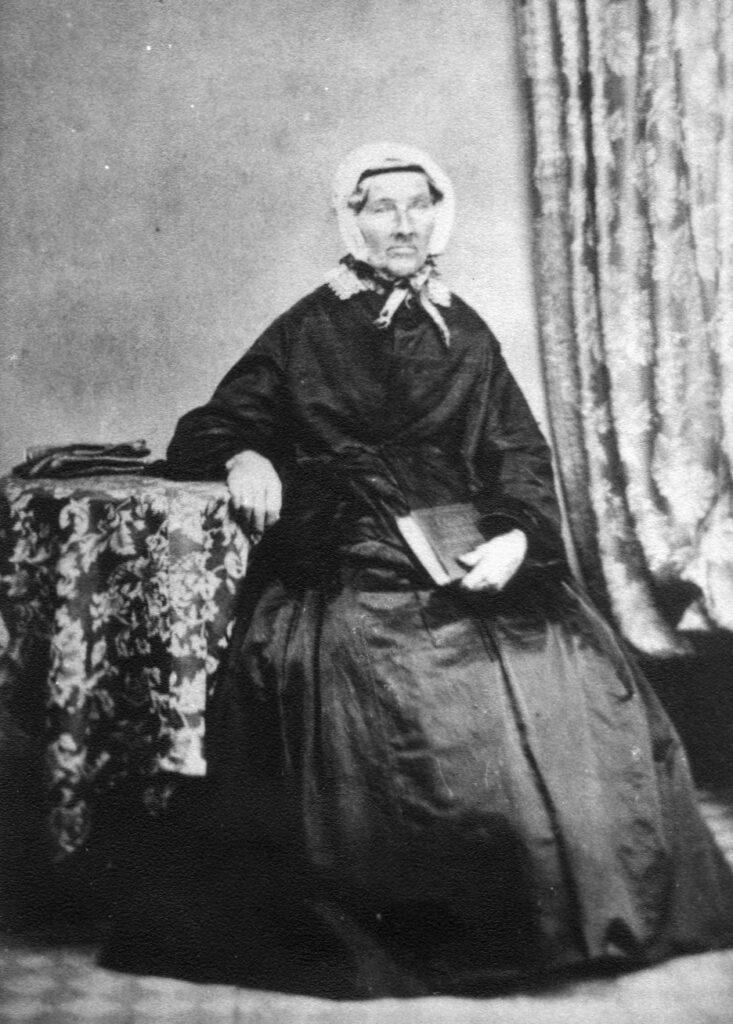
Francis, on arrival, would have soon made enquiries as to whether his brother Edward was in town, for Edward was expecting them. Edward although living in Launceston, 123 miles to the north, regularly visited Hobart in his capacity as a cartage contractor. Two of Edward’s children, Grace and Richard, had accompanied Francis and Mary, and as they waited to meet a father they did not remember, were probably filled with a mixture of excitement and anxiety.
Edward had almost certainly written to the family encouraging them to come, telling of the excellent opportunities that the Colony possessed and which were far greater than Francis could expect in Cornwall, England. By this time Edward had gained his freedom, had remarried, and received land grants of 420 acres on which he was running cattle and horses. Besides the farm operation and cartage contracting business, he was also leasing out bullocks and carts to surveyors employed by the Government.
Hobart Town was not to be their final destination, but rather they planned to continue onto Launceston. This was also a penal settlement which had been established in 1806.
A journey overland to Launceston at the time was not only hazardous due to poor roads, but also dangerous with regular attacks occurring on travellers by Aboriginal people and marauding bushrangers. By 1831 construction of the road north was underway with some 1,000 convicts employed in its building and maintenance.
Newspaper reports of the time tell that the bush along the route was infested with over 100 bushrangers, mostly escaped convicts, whose only means of survival was by robbing and plundering from settlers and travellers. These were often brutal and desperate men with the confrontations often ending in not only robbery, but on occasions injury and sometimes murder. Frequently the bushrangers, to allow themselves time to escape, left their victims tied to trees, sometimes with fatal consequences.
It is therefore likely that Francis and John, as other travellers of the time, carried arms for protection and made the journey with some fear and trepidation.
The French and Badcock emigrants soon reached Launceston with John Badcock and Ann French, the eldest daughter of Francis and Mary, marrying there at St. Johns Church of England in October of that year.
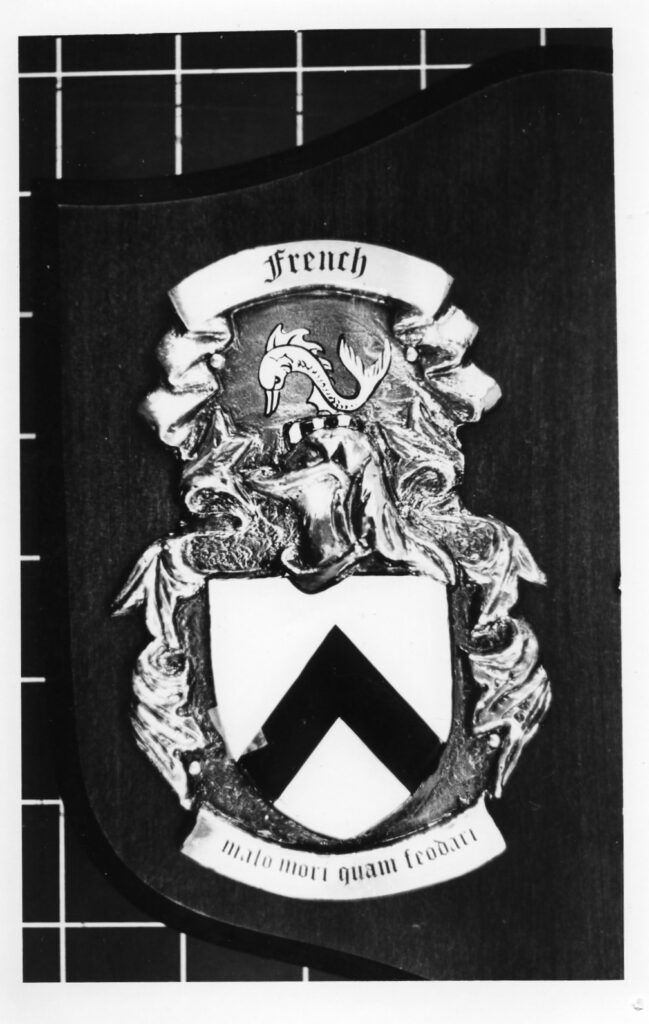
French Family Crest 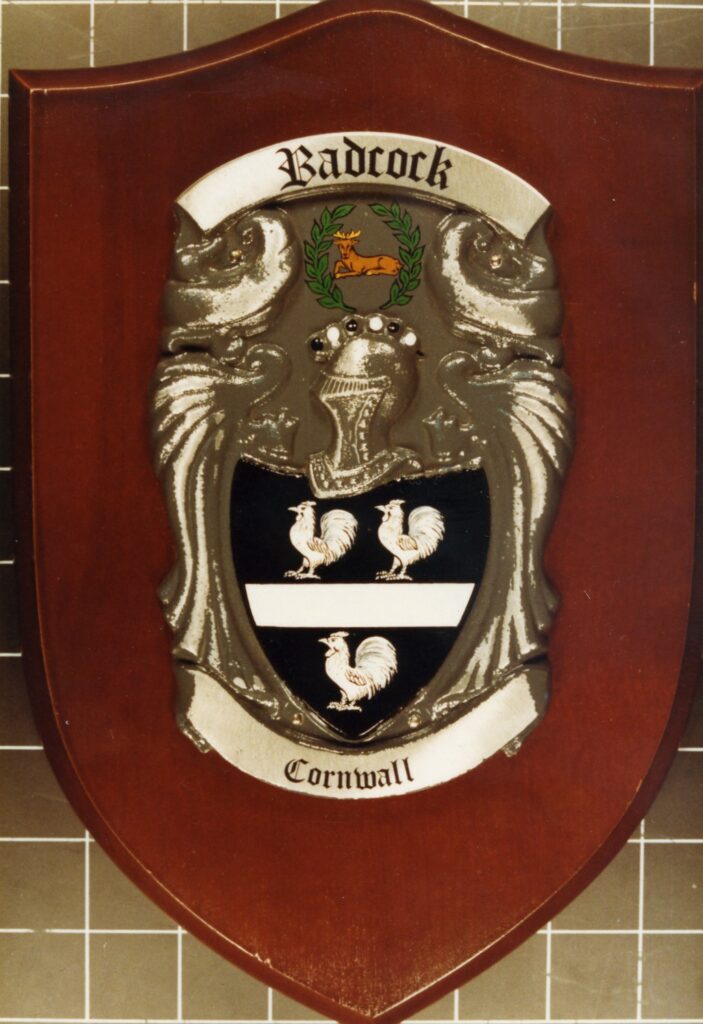
Badcock Family Crest
Launceston in 1831 had a population of about 2,500 people, around half of whom were convicts. It was even less developed than Hobart, although some sort of order was beginning to grow out of the chaos that had previously reigned. At the time there was no street lighting and no made roads in the town and with much of the then settlement built on marsh ground, the roads were often boggy with deep holes. Bullock teams often foundered in these holes, also there were frequent drownings of residents who fell into them or the unbridged streams running through the settlement. The newspaper in 1831 reported that cattle could be found grazing in the cemetery and pigs roaming the town. A particular hazard was stampeding cattle as they were being rushed through the streets on the way to the abattoir, driven at speed by men on horseback and cracking whips.
One eye witness of the time described the people of Launceston as being “wicked beyond description” and possibly because of this, Francis felt that action was needed to improve the situation. Consequently, history records that Francis, as a Wesleyan Methodist preacher, soon after arrival started conducting open-air services at the foot of Windmill Hill, Launceston. At that time there was no Methodist Church or organisation in the town. For seating, he used wooden blocks.
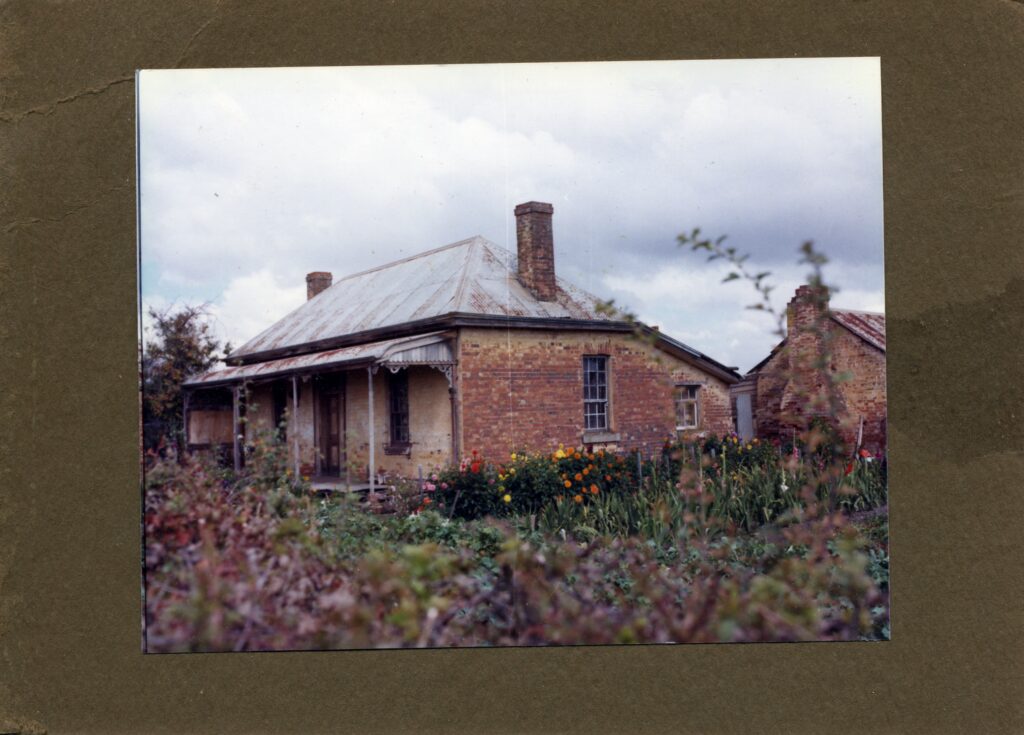
Both the Francis French family and John and Ann Badcock soon found land at Longford, 14 miles south of Launceston, where they both resumed farming. Francis remained on his 50-acre property until his death in 1850. He together with other family members are buried in the family plot at the Longford Christ Church, Anglican cemetery.
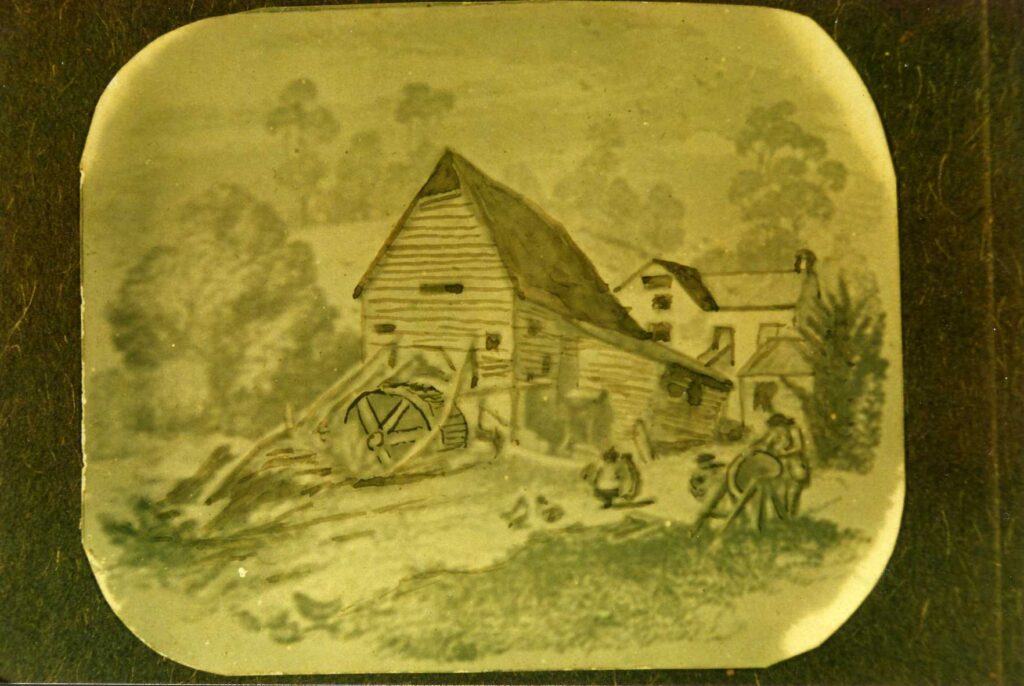
John Badcock on the other hand moved frequently and at times operated holdings of more than a thousand acres. During the 1840s and until 1850, he went flour milling, building and operating a water-powered mill at Longford. Later he was a noted breeder of draught horses some of which realised as much as 200 guineas.
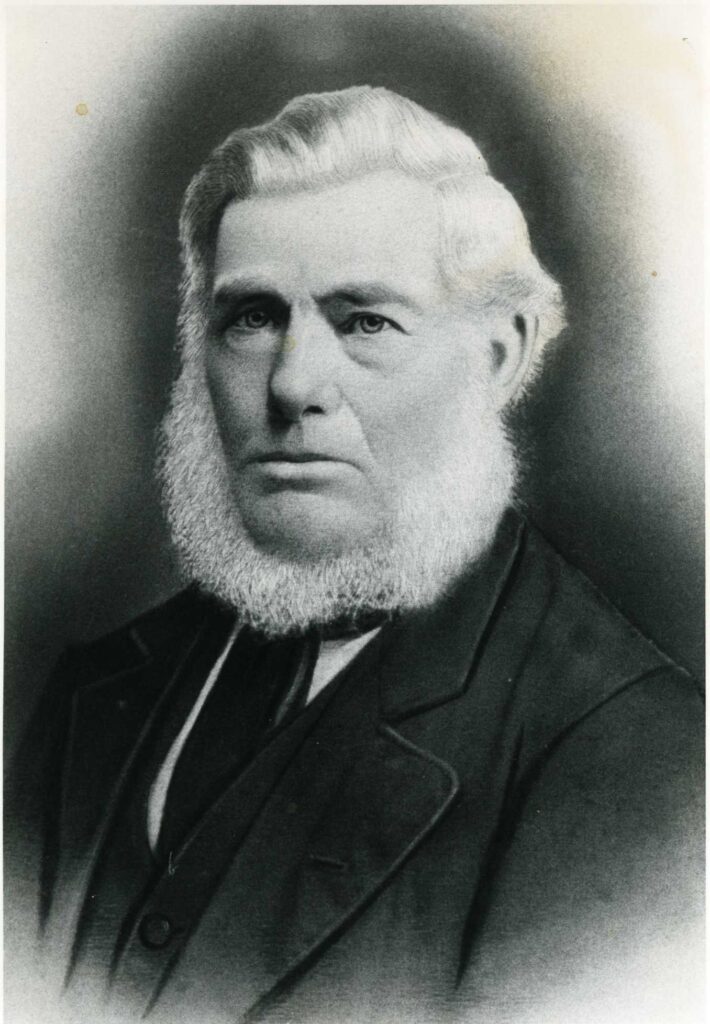
John died at Westbury in 1890 and is buried with his second wife Esther (nee Elmer) and a granddaughter at the nearby Hagley Methodist cemetery (The headstone incorrectly lists ‘Ester Margaret’ instead of ‘Esther’). Seven of his 23 children are also buried at the same cemetery and a good number of later descendants.
Now 175 years from arrival in Australia, the French and Badcock families have greatly multiplied and spread throughout Australia and to a number of overseas countries, although the majority of descendants remain in Tasmania. These descendants are now estimated at 40,000 people, this helped by large families in the early generations after arrival.
Francis and Mary had a family of 11 children, three born in Van Diemen’s Land, 112 grandchildren and over 600 great-grandchildren.
John and Ann also had 11 children before her death in 1850 at the age of 37 years. Five years later John married again, to Esther Elmer, he was aged 48 and Esther half his age at 24 years. Twelve children were born to John and Esther. From John’s total of 23 children, came 140 grandchildren, the firstborn in 1852 and the last in 1917.
Many descendants still remain in agriculture and now farm large areas of land across northern Tasmania. The Badcock family have been and still are much involved with the production of stud stock, horses, cattle, sheep and pigs, and export their progeny widely.
Two Badcock descendants have become Rhodes scholars, while others have become noted inventors with their inventions being adopted worldwide. A number have excelled in sport, including Clayvel Lindsay “Jack” Badcock who played test cricket in Don Bradman’s side. He is also noted in the Guinness Book of Records as the youngest person to play first-class cricket, when in 1929, at the age of 15 years, he represented Tasmania in a first-class match against Victoria. Also many in both families have continued their strong church involvements.
Some Cornish characteristics continue to be exhibited with the terms of “up along” and “down along” still being used. Some descendants are still identified as having Cornish roots by accent. The retention of these features has been helped by having other Cornish families as neighbours and include, Jago also from Pelynt, Pearn, Hingston, Mitchell, Blackwell, Chilcott and Chugg.
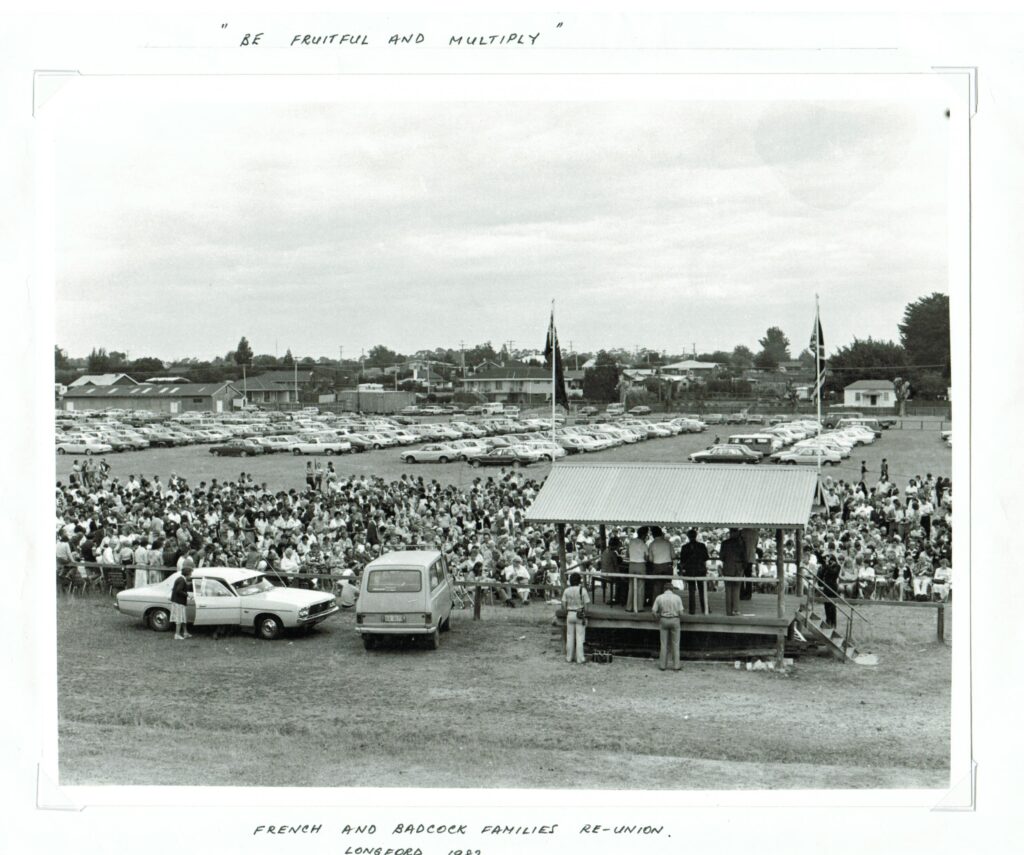
Two reunions have been held since arrival. The first in 1982 to celebrate 150 years in Australia was attended by 2,500 people coming from every Australian State and several overseas countries. The second was held in 1990 to launch the French and Badcock family history book “Go…..Be Fruitful and Multiply”, which 2,000 people attended. This book of over 600 pages concentrates on the early generations of each family and includes a near completed family tree to 1989.

Article researched and written by Ivan Badcock (C.F.H.S. Member No. 1281).
This article was written around 2006 and originally appeared in the Cornwall Family History Society magazine, Journal 122, December 2006.


Hi Ivan, my name is Debbie Spiteri and l live in Melbourne Victoria. I have just purchased a copy of your book from the national library. It is so interesting to read and get information from. I am looking for my great grandfather George Badcock. 23 December 1882 Hobart, Tasmania
Death 14 June South Australia.
I believe he is my grandmothers father jean Harrison born 8/01/1912. He was married to Annie Josephine Smith December 1902 Tasmania. Left her and fled to the main land. Later married Dorothy Alice Lilley. All l know is he was a harness horse trainer and would change his name on occasion to Harrison. Thank you for sharing your wonderful book. Debbie
Ivan, what intrigues me is the relationship between Francis FRENCH (1791-1850), John BADCOCK (1807-1890) and John JAGO (1805-1886) – my interest is with the latter. They all originate from a small area in Cornwall, England (Pelynt) but I cannot find the precise relationship (eg John JAGO named a son Francis French, and Francis FRENCH married Mary OLIVER, the same name as John JAGO’s grandmother). I know that the FRENCH family and John BADCOCK arrived together in Tasmania on the brig “Mary Ann”. Have you any thoughts, please, where the JAGO family fits in?
Graham
This interests me as a Jago once told my son he was related to him. Worth looking into.
I would love to get a copy of this book. Can anyone tell me where I may find one? My father is from the French family so it would be very interesting to read it.
Hi Michelle, the book sold out long ago. People have been known to pick them up at auction sales from anywhere between $1 and $1000. There is a copy located at the Linc Library in Launceston, Tasmania. Another copy is at the National Library of Australia in Canberra.
Thankyou so much for your quick reply. I had found the one at the national library but am only able to purchase an excerpt as they can’t provide a transcript of the complete book. I wasn’t aware of the one at the Linc Library so will try my luck there. Many thanks. Michelle
hello my name is Hannah Badcock I really wanted to learn more about my family and the book really helped me thank you
Is there a higher resolution or colour photo of the french family crest available?
I believe this is the French family I’m related to.
Hello
I am helping a friend trace some family history and need some info.
I dont know if I have the correct French Family??
I would like some information on Benjamin French who married Sarah Jane Dixon(Dickson) in 1866. They lived in the Maldon area in Victoria.
Thanks
Hello from Irene Margaret Mason (née Jones)
Is there an electronic version of the publication?
Also, have any supplements been published?
Many thanks
I have been researching early Methodist revivals in Tasmania and I was wondering if you knew where “at the foot of Windmill Hill” Francis French preached. I have looked at old maps of Launceston from that time and I think the most likely locations (open areas where a crowd could gather) were the govt. reserve which is now City Park or an area near the corner of York and George Streets. What do you think?